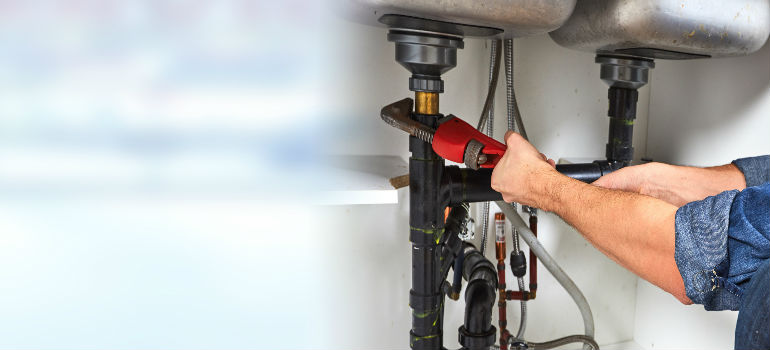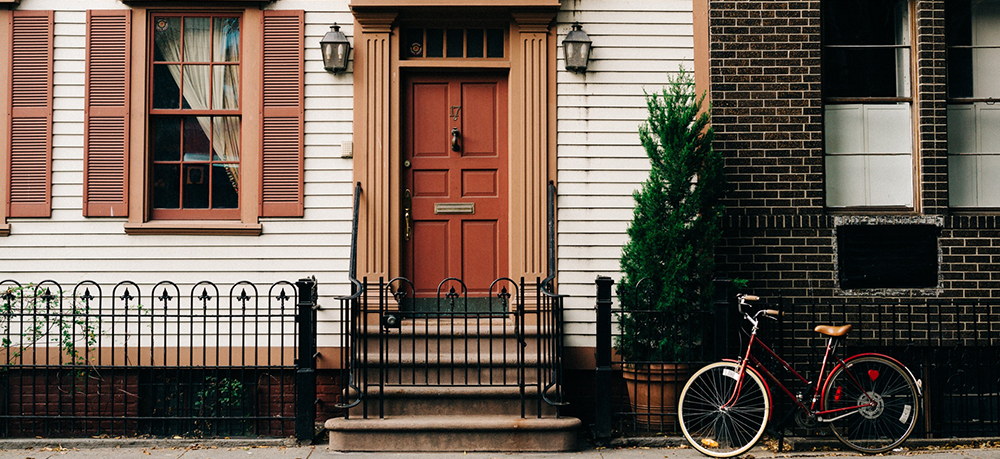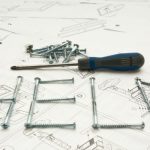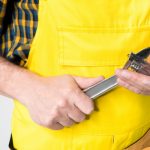
If you spend too much time at home or are into DIY repairs, then you would definitely want to learn what it takes to be a top-class plumber.
Well, you’re in luck, because the Fantastic Handyman team offers you a nifty guide on how to be a good plumber.
Table of Contents
What do You Need to Be a Good Plumber
First of all, the tools. In order to be able to perform both basic and advanced plumbing repairs, you can use the following set of tools:
- Plunger. A classic tool used to dislodge clogs in toilets, sinks, tubs, etc.;
- Propane torch. A self-igniting torch head that lights up at the pull of a trigger;
- Tubing cutter. The best tool for cutting copper pipes;
- Pliers. A tool you can use to hold, pull, twist, tighten, or loosen something;
- Hacksaw. A tool that cuts through metal, hardware, screws, nuts, bolts, and plastic;
- Hand auger. An instrument used for unclogging tubs, showers, sinks, toilets, and drain lines;
- Metal file. Use a metal file to smoothen edges after you’ve cut a metal pipe with the hacksaw;
- Basin wrench. The best tool for tightening and loosening sink faucet nuts;
- Pipe wrench. Another wrench for manipulating faucet nuts. You’ll need two for pipes.
The Traits of a Master Plumber
Plumbers need good arm strength, especially when using two wrenches at once. Good eyesight is also important in order to spot problematic areas. Coordination and balance when working in cramped spaces are a must as well.
It’s not rare for these specialists to calculate measurements, which is why a grasp of basic mathematics is absolutely essential. Communication skills are also handy if you’re hired by someone else to fix a problem.
How to Unclog a Sink
There are a few ways you can clear a clogged sink. Here is how.
- Use a plunger. Everything is a-ok, as long as you have this handy tool by your side. Simply adjust the plunger over the drain, push the rubber cup down and then pull it back up with brisk, repetitive motions. Put some strength into it. You’ll notice that the obstruction is gone as soon as the water starts pouring down the drain.
- Prepare a drain clearing solution. You don’t have to use toxic chemicals – vinegar and baking soda will do just fine. However, don’t forget to use rubber gloves, just in case. Then, pour some baking soda in the drain, add a cup of vinegar and come back in a few minutes. When you return, you should see an unclogged drain. If not, repeat the whole process.
- Use a cable auger. Yet another useful tool, used by good plumbers worldwide. Just open the drain under the sink and let the excess water pour out into a bucket. Feed your cable auger through the pipe until you find the obstruction. Remove the problematic dirt particles and you’re good to go.
Need a Handyman?
Enter your postcode to view our rates and availability in your area.
For questions about the services we offer visit our main site or you can always call us at 020 3404 4045
How to Unclog a Toilet
- Prepare the bathroom and brace yourself. A clogged toilet often means an overflowing one… and you certainly don’t want to work in such conditions. First of all, don’t be quick to flush your water closet. Close the toilet flapper and use whatever you can to soak the water around. Turn on the ventilation fan or open a window and make sure you use rubber gloves that also cover up your elbows.
- Try to remove the obstruction by hand. Sometimes, this simple method is more than enough to do the job, especially if you’re able to clearly see the problematic spot that caused the flood. While wearing rubber gloves, reach into the bowl and remove everything that stays in the way of water. If this doesn’t do it, proceed with the next step.
- Use a plunger. Cover the hole completely and push the rubber cup up and down with all your strength. The faster you do it, the better the end result will be. This method alone should get the job done, as long as the obstructed area does not contain a solid object.
- Flush the toilet. You will need to do this a few times before you see any results as obstructions can sometimes get very stubborn.
Check also:
How to Fix a Leaking Boiler Pipe
How to Unclog a Dishwasher or Washing Machine
The dishwasher and the washing machine get clogged in the same spot, so finding the pump is all you need to do in both cases.
- Soak up the water. A clogged dishwasher or a washing machine is usually surrounded by a big puddle of soapy water. You don’t want to work like this, so be sure to wipe the floor dry first.
- Unscrew the front panel. Get yourself a screwdriver and remove the bolts that hold the outer shell of your appliance together. Make sure it’s unplugged from the electrical supply beforehand.
- Remove the front panel. Once all bolts are removed, carefully hold the exterior shell and put it away so you can find the problematic blockage.
- Unclog the pump. Start by looking for the pump itself. It’s usually a semi-transparent, tubular piece made of plastic. It’s easy to recognise it – this detail is the only thing that can actually get clogged. Some dishwasher or washing machine models don’t even need to have the pump removed. Then, simply reach out and clear the obstruction.
- If you don’t see any clogs, you may need to give the pump a closer look. At this point, it’s perhaps best to call a professional.
Plumbing may seem like a dirty job to do, but everyone knows it’s one of the most important property maintenance jobs out there. Knowing how to do it yourself is the best thing you can do for your house. Of course, if you don’t have the time for any of that, you can always call a professional to do everything for you. Last but not least, ensure you take all precautions to find a good plumber in your area.
Image Source: kurhan/shutterstock.com



